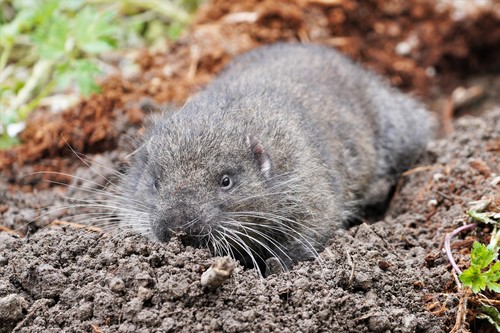
Mountain Beaver
Aplodontia rufa, or the mountain beaver, is a unique rodent with a stout build and short tail, found in the lush forests of the Pacific Northwest. Known for its intricate burrows, it plays a vital role in soil aeration and ecosystem health, feeding on diverse vegetation.
6-10 years
Lifespan
510.0 - 910.0 g
Weight
Length: 30 - 51 cm
Size
Brown, Grey, Red, Tan
Color
2 years
Age of Sexual Maturity
8 weeks
Age of Weaning
Medium
Aggression
Least Concern
Conservation Status
Stable
Population Trend
Characteristics
Aplodontia rufa, commonly known as the mountain beaver, is a burrowing rodent native to the Pacific Northwest. It has a stout body, small ears, and short tail. It inhabits moist, forested areas and is known for its complex burrow systems. It feeds on a variety of vegetation.
Distribution Range of the Mountain Beaver
Aplodontia rufa, commonly known as the mountain beaver, is native to the western regions of North America. Its geographical distribution includes the Pacific Northwest, specifically in the United States and Canada. It is primarily found in the states of Washington, Oregon, and California, as well as the southwestern part of British Columbia.
Mountain Beaver's Habitat
Environmental Conditions
The mountain beaver typically inhabits moist, temperate forests and dense underbrush areas. It is often found in environments with abundant water sources, such as streams or marshlands, as moisture is critical for their survival. The climate in these areas is usually mild, with high humidity levels, frequent rainfall, and cool temperatures.
Ecological Niche
Aplodontia rufa occupies an ecological niche as a burrowing herbivore. It prefers to live in areas with soft soil that allows for easy digging of extensive burrow systems. These burrows provide shelter and storage for food. The species tends to avoid open areas, favoring dense vegetation that offers protection from predators and access to a variety of plant materials, including ferns, shrubs, and tree bark, which constitute their diet.
Copyright @ Nature Style Limited. All Rights Reserved.
 English
English